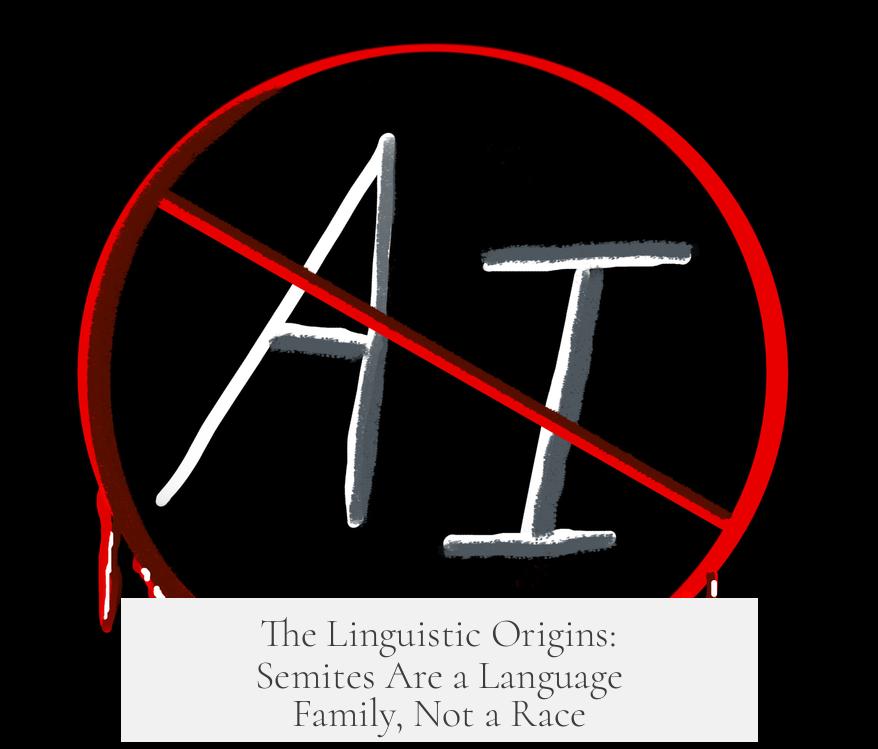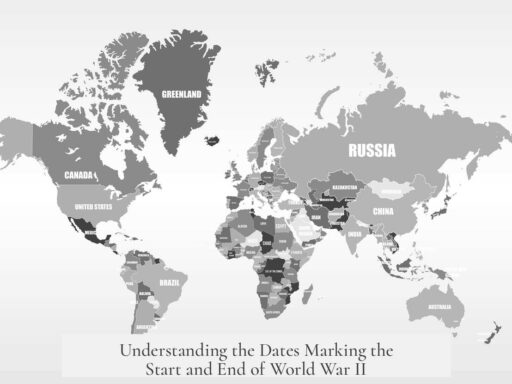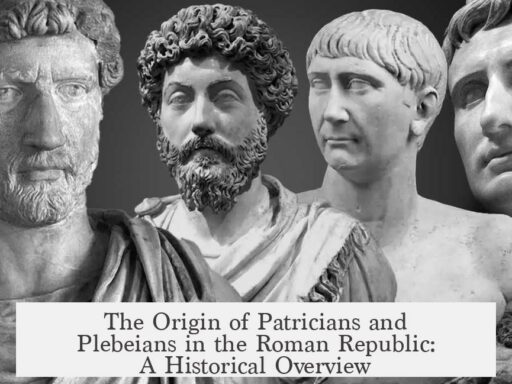The term “anti-Semite” applies only to anti-Jewish sentiment because its modern political use, coined in the 19th century, deliberately targeted Jews as a racial group, diverging from the original linguistic meaning of “Semite” that includes Arabs and other peoples.
Originally, “Semite” referred to a family of languages. These Semitic languages include Hebrew, Arabic, Aramaic, Amharic, and others. The term described a classification based on linguistic features rather than ethnicity or race. Groups speaking these languages—Jews, Arabs, Babylonians, Nabataeans—were all considered Semitic in a linguistic sense. This broad semantic category had no inherent political or racial implications.
In the 19th century, the term “anti-Semitism” shifted from a linguistic idea to a political and racial one. It emerged in Europe in the context of rising nationalism and racial theories. Intellectual trends at the time tried to categorize human differences in strict racial hierarchies. This period marked the decline of religious explanations for social conflicts, which had been dominant for centuries. Instead, new racial theories sought to explain societal divisions as struggles between distinct races.
Anti-Semitism was coined by Wilhelm Marr and others to name a political movement hostile to Jews, increasingly seen as a racial group separate and opposed to the so-called “Aryan” peoples. This racial interpretation was detached from the linguistic roots of the word “Semite.” Unlike the linguistic use, which encompassed Arabs, Jews were singled out based on perceived racial characteristics and perceived political and social threats.
The rise of modern racism framed history as a conflict between races, not merely religious or cultural differences. Jews became cast as a dangerous, antagonistic race against the “Aryan” race, which itself was a repurposed linguistic term used to describe Indo-European peoples but was distorted into a racial concept by nationalist movements. This racialized definition excluded Arabs and other Semitic-speaking peoples.
Anti-Semitism, therefore, specifically targets Jews because the term was shaped and popularized by those who used it to describe Opposition to Jews exclusively. Arabs, although linguistically Semitic, were not included because these racial ideologies separated groups not by language but by perceived racial and political identity.
This usage parallels how “Aryan” was applied historically. Originally denoting an ancient group from Iran and India, Aryan was redefined by nationalist and racialist groups to mean a particular “pure” Germanic race, excluding many original Aryan peoples. Similarly, anti-Semitism adopted a narrow meaning that no longer reflected the original broad linguistic category.
| Aspect | Linguistic Meaning | Political/Racial Meaning |
|---|---|---|
| Definition of Semite | Speakers of Semitic languages: Hebrew, Arabic, Amharic, etc. | Jews conceived as a distinct race opposing Aryans |
| Groups Included | Jews, Arabs, Babylonians, Phoenicians, others | Only Jews targeted by anti-Semitism |
| Origin of Term “Anti-Semitism” | Not used in linguistic context for hatred | 19th-century racial ideology and nationalist movements |
| Parallel Term | “Aryan” as language group | “Aryan” as racial purity myth for Europeans |
In summary, the term anti-Semite only applies to anti-Jewish people because:
- It originated as a 19th-century political term targeting Jews as a racial enemy.
- The original linguistic meaning of “Semite” includes Arabs, but the racial meaning deliberately excludes them.
- The term was adopted by racist movements focusing on Jews as a unique threat, distinct from other Semitic peoples.
- Similar shifts occurred with terms like “Aryan,” illustrating how linguistic terms were transformed to racial-political identifiers.
This historical and ideological development explains why anti-Semitism refers exclusively to hostility toward Jews, despite Arabs also being Semitic language speakers.
Why Does “Anti-Semite” Only Mean Anti-Jewish? The Curious Case of Semites and Semitism

Put simply, anti-Semitism refers exclusively to prejudice or hatred against Jewish people, despite Arabs also being Semitic by linguistic classification. This is because the term “anti-Semitism” evolved in the 19th century within a very particular political and racial context that specifically targeted Jews, not Arabs or other Semitic groups. But why? And how did a linguistic term come to apply so narrowly? Let’s untangle this historical and linguistic knot—stick with me, it’s a fascinating journey!
The Linguistic Origins: Semites Are a Language Family, Not a Race

First, the word “Semite” originally comes from linguistics. It refers to people who speak Semitic languages. These languages include not only Hebrew and Arabic, but also Babylonian, Phoenician, Nabataean, and Amharic. So, both Arabs and Jews are technically Semitic in this primary sense—it’s about languages, not ethnicity or race.
In fact, neither Jews nor Arabs are “Semites” as people; rather, Hebrew and Arabic are Semitic languages. To make a quick comparison, knowing that someone speaks English doesn’t automatically put them in a distinct “English race.” Same with Semitic languages.
But Then the 19th Century Comes Along—A Game Changer

Jump ahead to the 19th century, a turbulent time filled with revolutions and scientific curiosity. The French Revolution contributed to a decline in explaining the world through religion alone. Instead, new ideas like nationalism, race theories, and history as conflict took center stage.
It’s during this era that things turn political. Racism as we understand it emerged, framing groups within hierarchical “races.” Jews got caught up in this framework as a distinct “race” seen, wrongly, as antagonistic toward the so-called “Aryans.”
It’s important to note that the term “anti-Semitism” was coined in this new, political, racialized environment. It wasn’t just religious hatred anymore; it was about race, nationality, and imagined dangers.
“Anti-Semitism” as a Political Weapon Targeting Jews

The term “anti-Semitism” was adopted to step away from purely religious-based persecution. Instead, it painted Jews as a distinct, dangerous racial group at odds with Aryans—another term with linguistic roots that became racially charged.
The new ideologies needed scientific-sounding terms to legitimize their views. Calling Jewish hatred “anti-Semitism” made it sound like a rational, scholarly opposition to a race. There was a deliberate attempt to give the idea a veneer of credibility.
Here is the kicker: the term excluded Arabs and other Semitic groups entirely. Why? Because the racial theories it arose from focused on Jews. The Arabs just weren’t part of this imagined racial rivalry with Aryans. The term “anti-Semitism” had divorced itself from its linguistic meaning to serve a narrow political narrative.
Think of It Like a Brand Name That Stuck

Anti-Semitism became the word to describe anti-Jewish racism. Just as “Aryan” got redefined by the Nazis and nationalist groups to mean “pure Germanic” rather than the original ancient peoples like Iranians.
Just because Arabs speak Semitic languages doesn’t mean they were targeted or implicated in this 19th-century racial theory. Hence, “anti-Semitism” stuck strictly with meaning hostility toward Jews. It’s the linguistic cousin that took a very different political path.
How Does This Matter Today?
Understanding this history helps clarify a lot about modern discussions. When people say “anti-Semitism,” they specifically mean prejudice against Jews—not against Arabs or other groups.
Does recognizing the linguistic breadth of Semitic peoples undermine the use of the term? Not really. It shows how language can evolve differently in political contexts. Words take on meanings beyond their dictionary definitions. Ever wondered why some terms get “stuck” with meanings that seem to miss half the story? This is a classic example.
What Can We Learn from This Strange Semantic Tale?
- Languages and races don’t always align: Just because groups share language roots doesn’t mean they share identity or treatment.
- Context matters: Terms can acquire specific meanings based on political or social histories rather than pure linguistic accuracy.
- Beware of misuse: Scientific-sounding terms, especially from 19th-century racial theories, often carry hidden biases that skew reality.
Practical Tips: Navigating the Term “Anti-Semitism” Today
If you want to discuss prejudice carefully, remember that “anti-Semitism” means anti-Jewish bias. If you’re talking about discrimination against Arabs or other Semitic speakers, specify those minorities directly.
Also, this history serves as a reminder to dig into word origins. Are we using a term because it’s truly accurate or just because history made it that way? Especially in politics and social discussions, clarity is king.
To Wrap Up
The term “anti-Semitism” applies solely to antisemitism against Jews by historical accident rather than linguistic precision. It took on a new life in the 19th century, rooted in racist, political movements framing Jews as a dangerous “race” and excluding other Semitic peoples like Arabs.
Words evolve—sometimes in unexpected ways—and “anti-Semitism” is a prime example of how meaning shifts depending on historical context rather than original definitions. When you hear the word today, it’s specifically about anti-Jewish hostility, a legacy of 19th-century racial theories rather than a broad linguistic category.
So next time someone asks, “Why don’t Arabs count as ‘Semites’ when we talk about anti-Semitism?” You can confidently say, “Because it’s a 19th-century political label, not a linguistic one.”
Why does “anti-Semitism” refer only to hostility against Jews, not Arabs?
The term “anti-Semitism” began in the 19th century as a political label targeting Jews only. It was divorced from its linguistic roots that include Arabs. The creators of the term used it to mean opposition to Jews as a race, excluding Arabs entirely.
How did the original linguistic meaning of “Semite” change over time?
“Semite” originally described people who spoke related languages like Hebrew and Arabic. Over time, especially during the 19th century, it shifted to a racial and political meaning. This change narrowed the term’s use to applying only to Jews, not all Semitic-speaking peoples.
Why were Arabs not included in the 19th-century concept of anti-Semitism?
The 19th-century racial theories focused on Jews as a distinct and “dangerous” race opposed to Aryans. Arabs were excluded because the term “anti-Semitism” was crafted specifically to target Jews within these racial ideas, ignoring the broader linguistic Semitic group.
Did “anti-Semitism” originally have a scientific basis?
Yes, it was framed to appear scientific and racial, using “Semitic” to describe Jews as a race. This falsely justified political agendas against Jews and gave these views a veneer of credibility, despite lacking true linguistic or biological basis.
How does the term “Aryan” relate to the usage of “anti-Semitism”?
Both terms were originally linguistic but were repurposed to describe races. “Aryan” came to signify the supposed superior German race, and “anti-Semitism” came to mean hostility against Jews. This selective use disconnected the terms from their original meanings.




